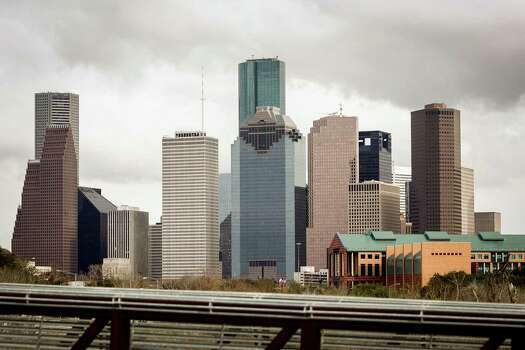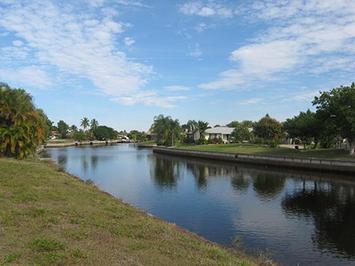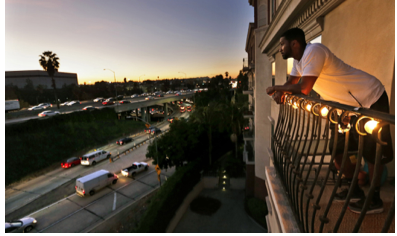SF residents are the only casualties in ‘war on cars’
San Francisco wants people to get out of their own cars and into ones that are being driven for profit. (Jessica Christian/S.F. Examiner)By Sally Stephens on July 2, 2017 1:00 am
San Francisco is a transit-first city. Those of us who live here are told we should use Muni to get around. Or ride a bike. Or walk. But above all else, we should not drive our cars.
To reinforce this, city policy makes it easy to remove existing parking spaces — turning curbside parking spots into parklets — and explicitly prevents new developments from providing a parking space for every unit built. Some have called this a “war on cars.”
If you look at the San Francisco Municipal Transportation Agency’s Strategic Plan, however, it turns out that “transit first” includes prioritizing ride-hail vehicles. In essence, The City wants people to get out of their own cars and into other people’s.
There’s no war on cars in San Francisco if the cars are being driven for profit. Those are welcome here — even if the drivers don’t live here, don’t pay taxes here and, often, don’t even know how to get from one place to another in The City.
No, the war on cars is aimed at San Francisco residents.
A recent report released by the San Francisco County Transportation Authority showed that cars from ride-hail companies Uber and Lyft make more than 170,000 trips — driving more than half a million miles — within The City every weekday. Nearly 6,000 ride-hail cars clog the streets during peak commute hours.
Clearly, Uber and Lyft don’t reduce traffic congestion and, indeed, may actually make it worse. Especially considering the fact that thousands of ride-hail drivers live elsewhere and commute long distances into The City to drive because they can make more money here. Without the ride-hail industry, those cars would not be on our streets.
When they drop off a fare, most drivers simply circle the block until they get a new rider. Or they pull over and idle while checking their smartphones, exacerbating other drivers’ searches for empty parking spots. When you add in the time circling, idling and then driving to pick up new fares, ride-hail vehicles would seem to create more pollution than the car of someone who “simply” drives his or her own car from home to a parking garage near their destination, especially if the car is an environmentally friendly hybrid.
A number of studies indicate that ride-hail companies are taking riders away from mass transit agencies like Muni and BART, not taking people out of their own cars. For example, BART attributes a decrease in ridership to both the San Francisco and Oakland airports to former riders now using Uber and Lyft.
Ride-hail use in San Francisco is concentrated in the downtown and South of Market areas. That’s also where mass transit is concentrated, and thousands of ride-hail cars on the same streets can only make it even harder for buses to stay on schedule.
Plus, newer buses and trains have fewer seats. You can cram more people in during rush hour if they’re standing, not sitting. Standing on a bus is not a problem when you’re in your 20s or 30s, but for seniors or parents with young children, it is not always a good option.
In addition, it’s hard to carry several grocery bags — or a diaper bag, toys and a stroller — on Muni. It’s not always easy for seniors to walk several blocks uphill to the nearest bus stop. Discouraging personal car use makes The City less friendly and less accessible for many families and seniors.
For people with a lot of disposable income, or expense accounts they can charge, ride-hail companies may be a reasonable way to get around. But for seniors on fixed incomes or people who are less well-off, Uber and Lyft are simply too expensive for regular use.
At least taxis have to pay a permit fee to operate in The City, and they can’t change their pricing on a whim. Ride-hail vehicles pay nothing to San Francisco and, with surge pricing, can cost you a lot more than a cab.
San Francisco’s “war on cars” targets residents to give up their cars, while allowing — even encouraging — people from out of town to drive all over our city, as long as they’re doing it for money.
Sally Stephens is an animal, park and neighborhood activist who lives in the West of Twin Peaks area.


















 “Knowing what you know,” she said, “being informed of how dangerous [freeway-adjacent housing] is, and allowing it to go forward could set the city up for some interesting lawsuits.”
“Knowing what you know,” she said, “being informed of how dangerous [freeway-adjacent housing] is, and allowing it to go forward could set the city up for some interesting lawsuits.”